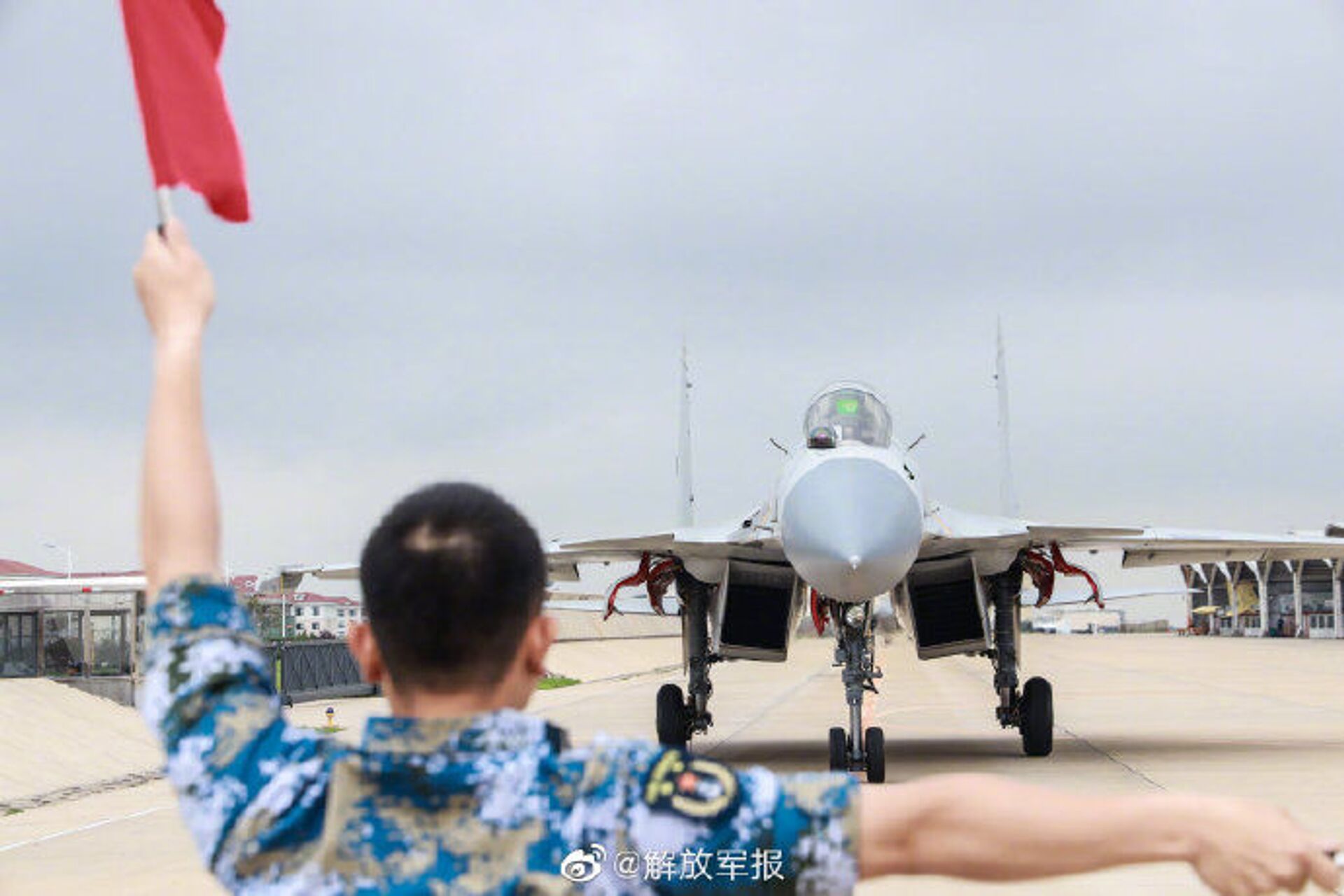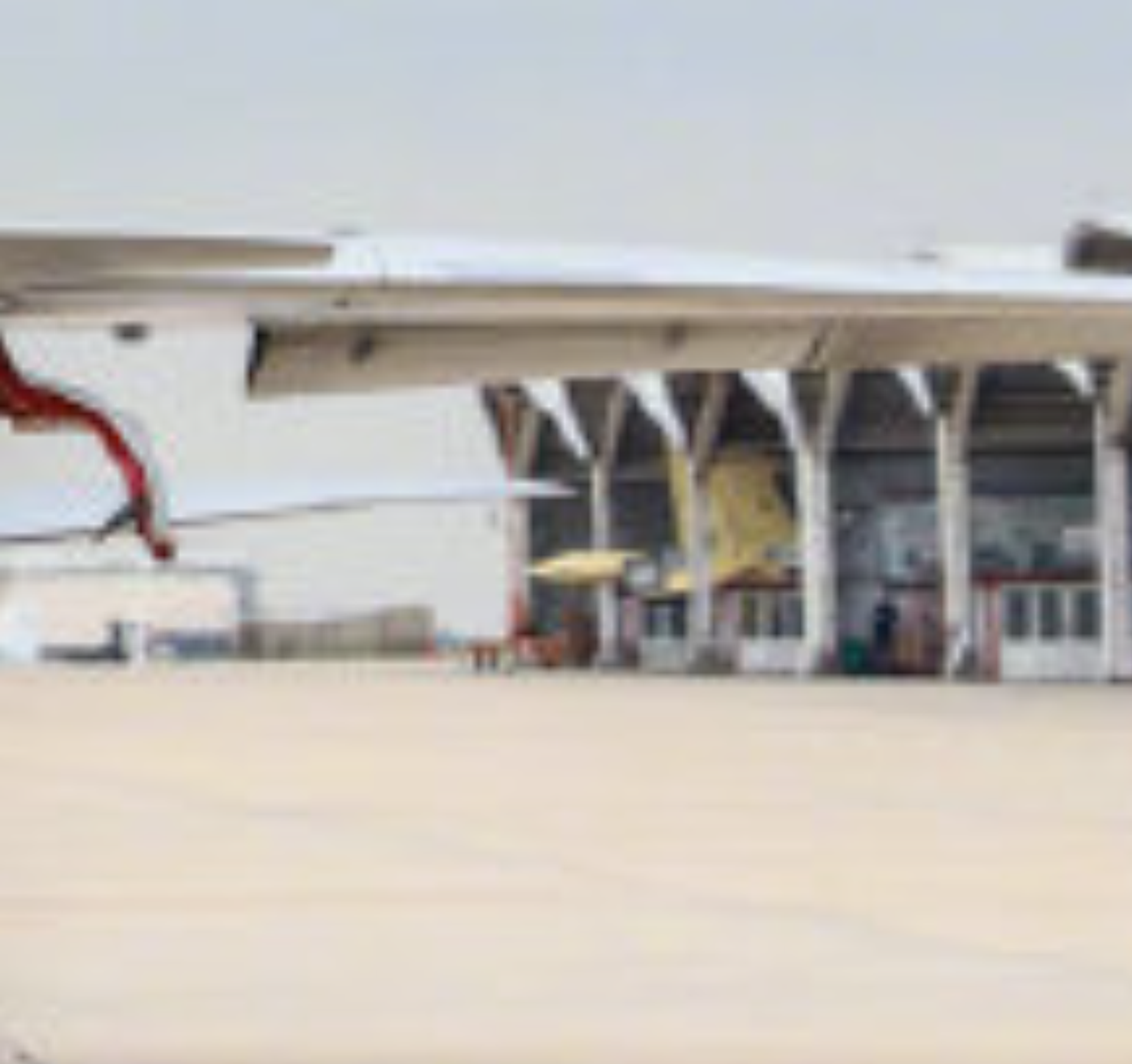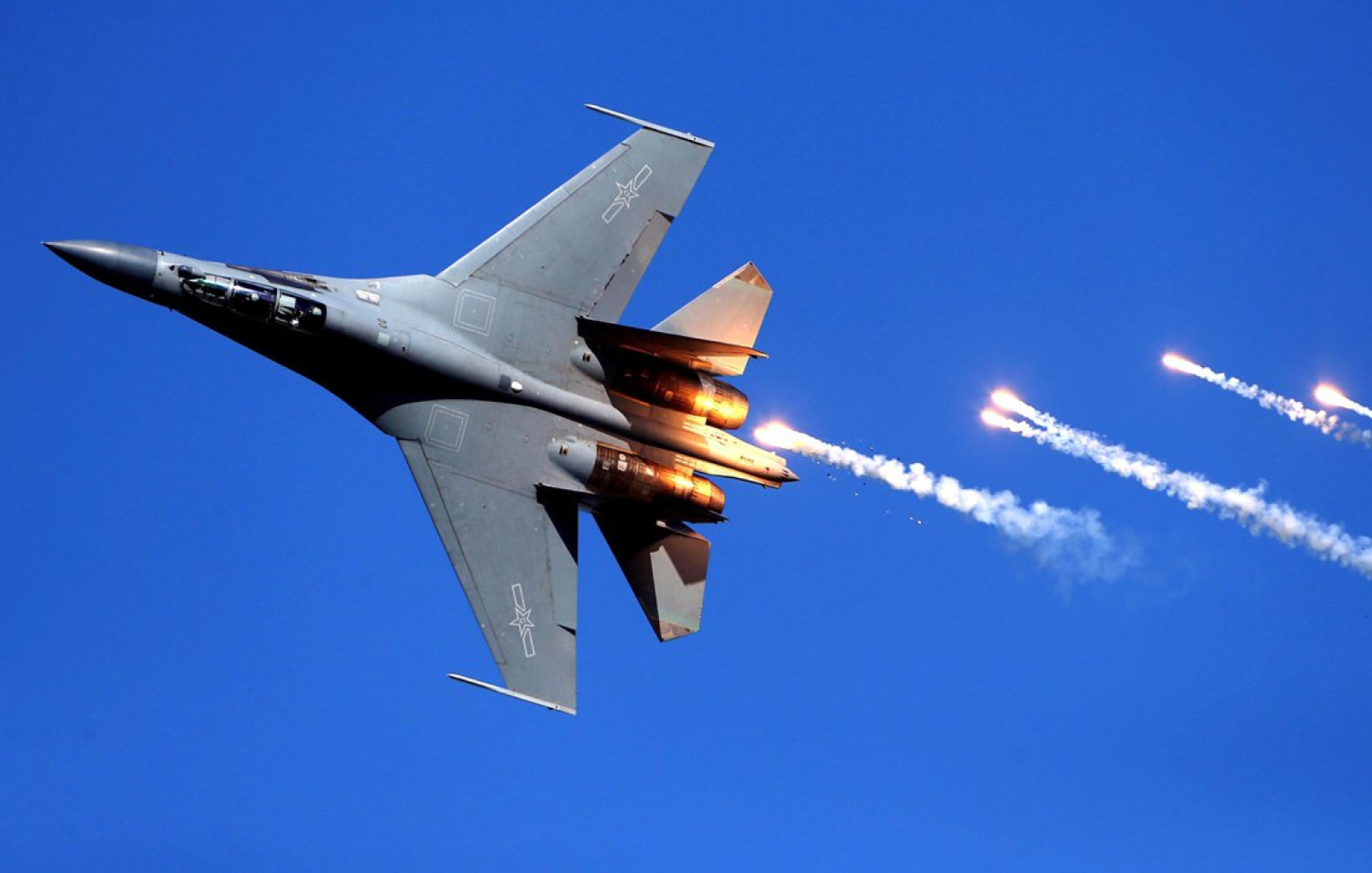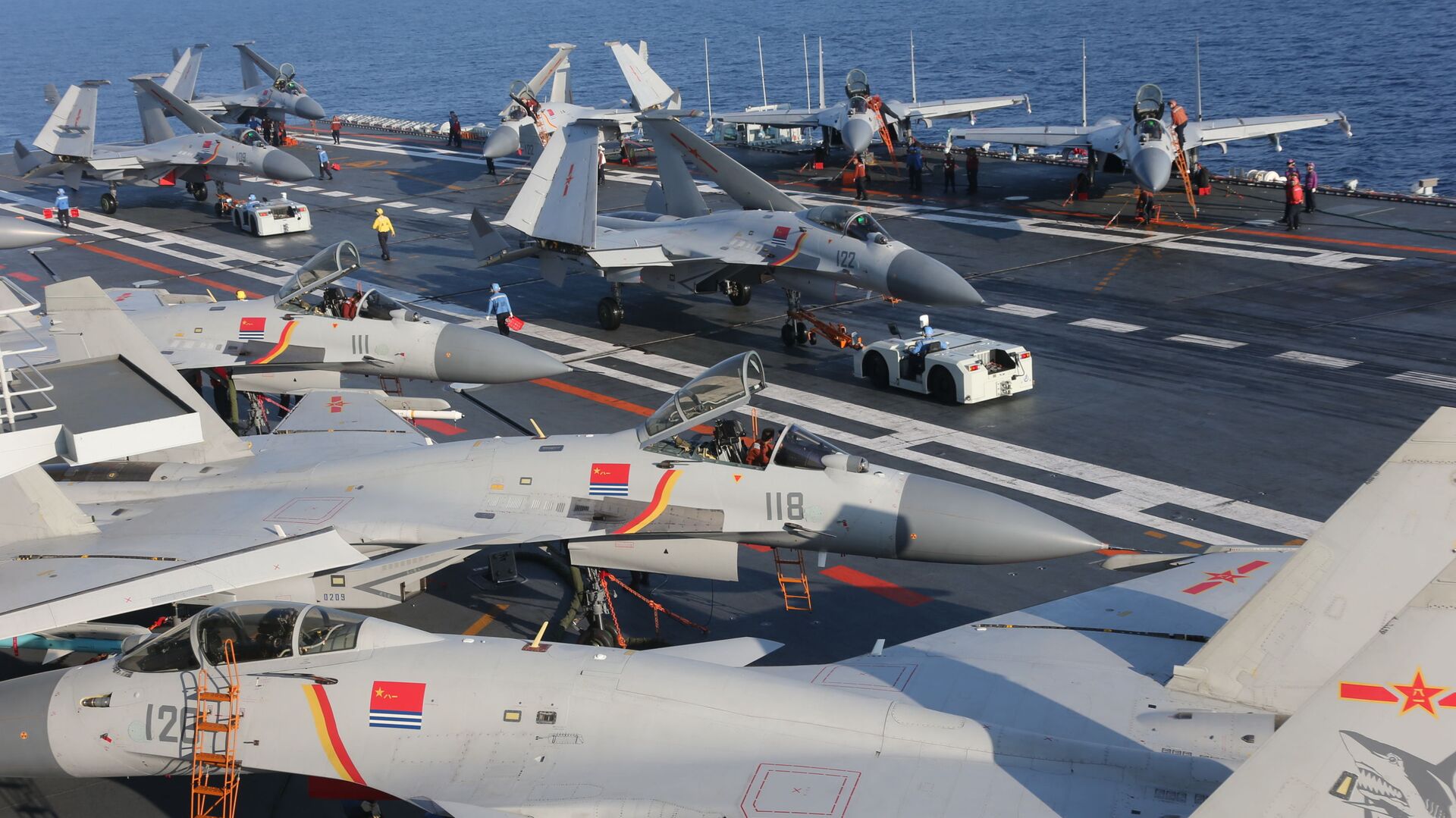Photos: Is China Testing Another Su-27 Derivative for Aircraft Carriers Alongside Its Infamous J-15?
Subscribe
As China puts the final touches on a catapult-assisted takeoff aircraft carrier, expectations are high about newer, heavier aircraft with the potential to join Chinese naval aviation. However, photos posted on Chinese social media might have accidentally hinted at an as-yet unknown potentiality: A J-11B or J-16 modified for carrier operations.
After the Sina Weibo page “People’s Liberation Army News” posted photos from a recent drill by a naval aviation squadron, analysts began to focus on an unusual detail in the background of one of the photos.

A Chinese People's Liberation Army Navy J-15 "Flying Shark" taxies on the runway
Andreas Rupprecht, a German author and expert on Chinese aviation, wrote on Twitter on Thursday that “the latest image (July 2021) suggested that one navalized J-16H (?) prototype was being evaluated by PLAN. And indeed, at least due to the long sting it is NOT a J-15 and by its longer part of the rudder it looks like a J-11BSH or J-16.”
His attention was drawn to the back right of the image, to the tail section of an aircraft painted in the fluorescent yellow used by Chinese test aircraft, and its unusually long “sting,” or the long protrusion backward from between the engines that resembles an insect’s stinger.

Detail of an image appearing to show the tail section of either a J-11B or J-16 fighter jet in testing colors
In reality, the “stinger” is a self-protection suite housing a radar warning receiver, a chaff and flare dispenser, and an electronic countermeasures unit. All members of the Su-27 family of aircraft have one, including the Chinese J-11, J-15 and J-16 aircraft. Rupprecht didn’t mention the Su-30MK2, which has an extra-large stinger housing an electro-optical reconnaissance pod. However, the J-15’s are notably shorter than the others in order to accommodate high angles of attack that risk slamming the stinger against the flight deck during landing; this mystery’s jet’s is quite long.
At present, the J-15 “Flying Shark” is the PLA Navy’s only carrier-based fixed-wing aircraft. Due to both of the PLAN’s carriers using bow ramps to launch aircraft, the J-15s are seriously limited in what they can accomplish, being forced to carry lighter loads due to their great size and weight. However, the forthcoming Type 003 super carrier under construction in Shanghai’s Jiangnan Shipyard will for the first time be equipped with electromagnetic aircraft catapults, which will whisk the jets off the front of the ship at a quicker speed than they could hope to achieve using the bow ramp, giving them the potential to become fearsome weapons of the sky.
Shenyang Aircraft Corporation, maker of the three aircraft being discussed, also revealed last year it was developing a new naval aircraft, which is widely speculated to be a derivative of its FC-31 stealth aircraft tester. The KJ-600 airborne early warning aircraft is also in development. Additionally, several fixed-wing drones have been tested and fielded that could further increase the carrier’s potency.

A Shenyang J-16 strike aircraft performs during the 70th anniversary celebrations of the founding of China's People's Liberation Army Air Force on November 12, 2019.
Perhaps the biggest question about a carrier-based variant of either the J-11B or J-16 is: why? The J-15 is capable of both air superiority and surface strike roles, as is the J-11B, while the J-16 is mostly a strike aircraft, albeit 18 years newer. Moreover, both the J-11B and J-16 already perform land-based naval patrols.
It could have to do with the small number of J-15s built, or perhaps that the J-11 is about 6,000 pounds lighter than the notoriously heavy J-15, but the J-16 is basically the same weight as the J-15. In nearly all other respects, including size, range, and speed, the two aircraft aren’t different enough from the J-15 to warrant such tests.
However, it might not be carrier ops that the PLAN is testing the jet on, either. This is all an elaborate extrapolation from a single grainy photo, after all.

